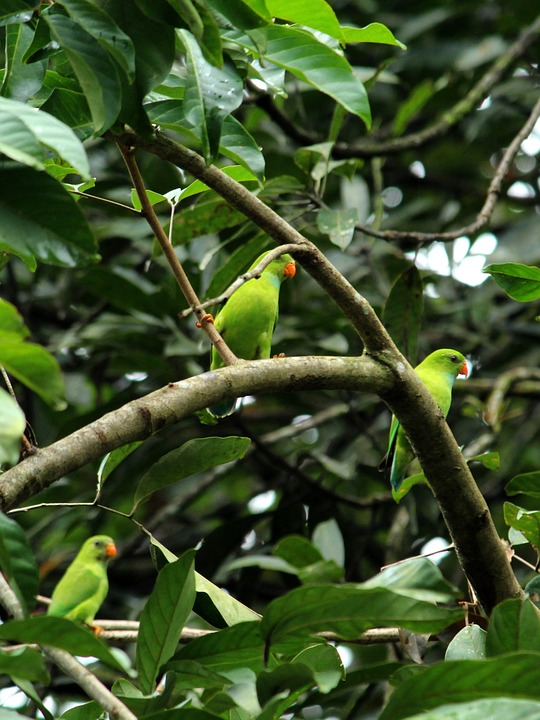Introduction:
Parrots are intelligent and social creatures that can experience stress just like humans. As responsible parrot owners, it is crucial to understand their behavior and effectively manage stress to maintain a happy and healthy bird. One valuable tool for promoting calm behavior in parrots during stressful situations is positive reinforcement. In this article, we will explore various methods and strategies that can help parrot owners create a positive environment, minimize stress, and encourage desirable behaviors in their feathered companions.
I. Understanding Parrot Behavior and Stress Triggers
A. Recognizing signs of stress in parrots: It is important for parrot owners to be able to identify signs of stress in their birds, such as increased vocalization, feather plucking, aggression, changes in appetite, or excessive preening.
B. Identifying common stress triggers for parrots: Parrots can be sensitive to changes in their environment, loud noises, unfamiliar people or animals, or even changes in their daily routine. It is important to be aware of these triggers and take steps to minimize their impact.
C. The impact of stress on parrot behavior and health: Chronic stress can have negative effects on a parrot’s overall health and well-being. It can lead to behavioral issues, compromised immune system, and even shorten their lifespan. Understanding the impact of stress can motivate parrot owners to prioritize creating a stress-free environment.
II. The Power of Positive Reinforcement
A. What is positive reinforcement? Positive reinforcement is a training technique that involves rewarding desired behaviors to encourage their repetition. It involves using treats, praise, or other rewards to reinforce good behavior.
B. Benefits of positive reinforcement training for parrots: Positive reinforcement is a gentle and effective way to train parrots. It strengthens the bond between the owner and the bird, promotes trust, and encourages the parrot to engage in desired behaviors willingly.
C. How positive reinforcement can promote calm behavior in stressful situations: By using positive reinforcement techniques, parrot owners can help their birds associate stressful situations with positive experiences. This can help reduce fear and anxiety, promote a sense of security, and encourage calm behavior.
III. Establishing a Positive Environment
A. Creating a safe and stimulating living space for your parrot: Providing a spacious and enriching environment is essential for parrot well-being. This includes providing perches, toys, and a variety of mental and physical stimulation.
B. Providing appropriate mental and physical stimulation: Parrots are highly intelligent and require mental stimulation to prevent boredom. Puzzle toys, foraging activities, and training sessions can help keep their minds engaged. Regular physical exercise is also important for their overall health.
C. Maintaining a consistent routine and predictable environment: Parrots thrive on routine and predictability. Maintaining a consistent schedule for feeding, playtime, and sleep can help reduce stress and create a sense of security for your parrot.
IV. Positive Reinforcement Techniques for Stressful Situations
A. Counter-conditioning: Associating stressful situations with positive experiences can help change a parrot’s emotional response. For example, if your parrot is afraid of the vacuum cleaner, you can gradually introduce it while offering treats or engaging in a fun activity to create positive associations.
B. Reward-based training: Encouraging calm behavior through positive rewards can help your parrot learn what is expected of them. For example, if your parrot is prone to screaming, rewarding them with attention or treats when they are quiet can reinforce the desired behavior.
C. Utilizing clicker training to reinforce desired behaviors: Clicker training is a popular positive reinforcement technique that involves using a clicker to mark the desired behavior, followed by a reward. This can be an effective way to teach your parrot new behaviors or tricks.
V. FAQs: Common Concerns and Questions
1. Can positive reinforcement be used to address aggressive behavior in parrots? Positive reinforcement techniques can be effective in addressing aggressive behavior by redirecting the parrot’s focus and rewarding calm behavior instead.
2. How long does it take to see results from positive reinforcement training? The time it takes to see results can vary depending on the individual parrot and the behavior being targeted. Consistency and patience are key, and it may take several weeks or even months to see significant changes.
3. Is it possible to use positive reinforcement to calm a parrot during veterinary visits? Yes, positive reinforcement techniques can be used to help your parrot feel more comfortable during veterinary visits. Gradual desensitization and rewarding calm behavior can help reduce stress in these situations.
4. What if my parrot doesn’t respond to positive reinforcement techniques? Every parrot is unique, and some may require different approaches or more time to respond to positive reinforcement. Seeking guidance from a professional avian behaviorist can be helpful in these cases.
5. Can positive reinforcement training be used with older parrots? Yes, positive reinforcement training can be used with parrots of all ages. Older parrots can still learn new behaviors and benefit from the positive reinforcement techniques outlined in this article.
Conclusion:
By understanding parrot behavior and utilizing positive reinforcement techniques, parrot owners can create a calm and stress-free environment for their feathered friends. Remember, each parrot is unique, and patience and consistency are key when implementing these strategies. With time and effort, positive reinforcement can help foster a strong bond between you and your parrot while promoting calm behavior in even the most stressful situations.









